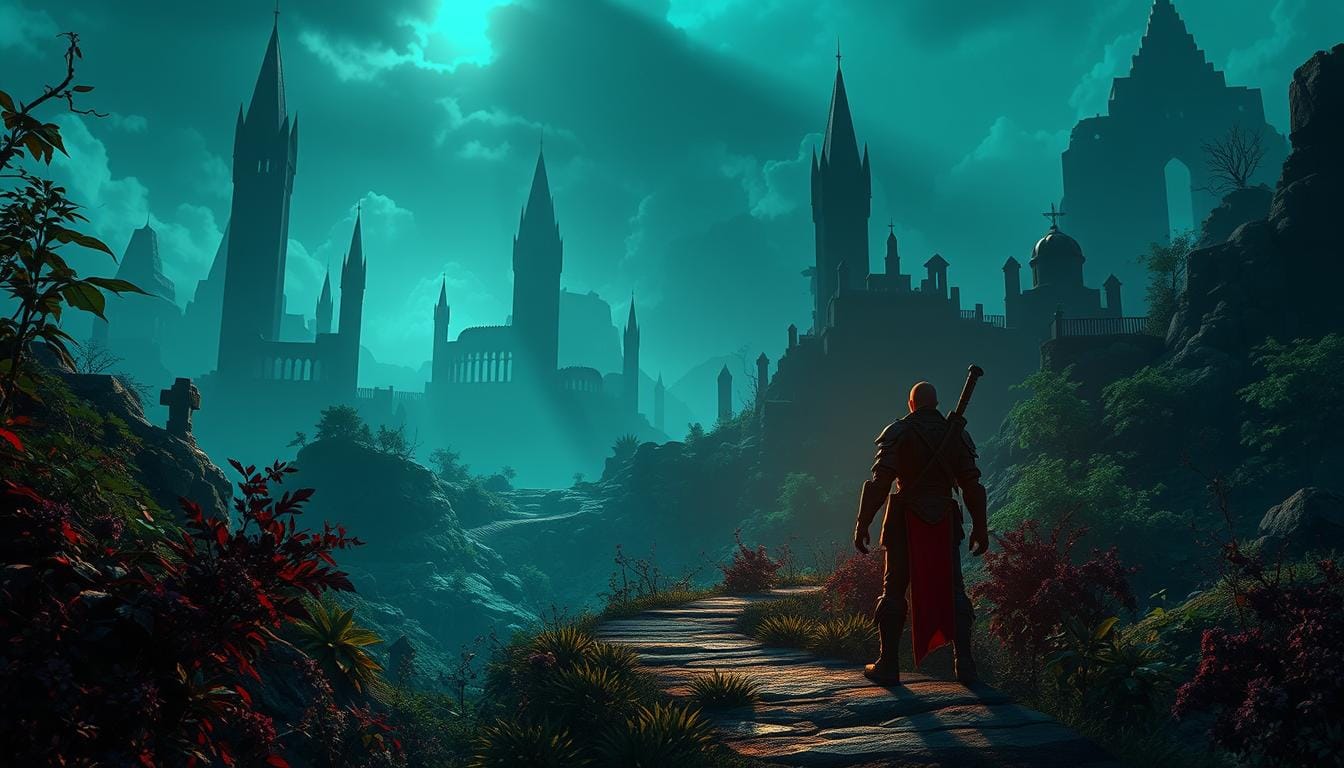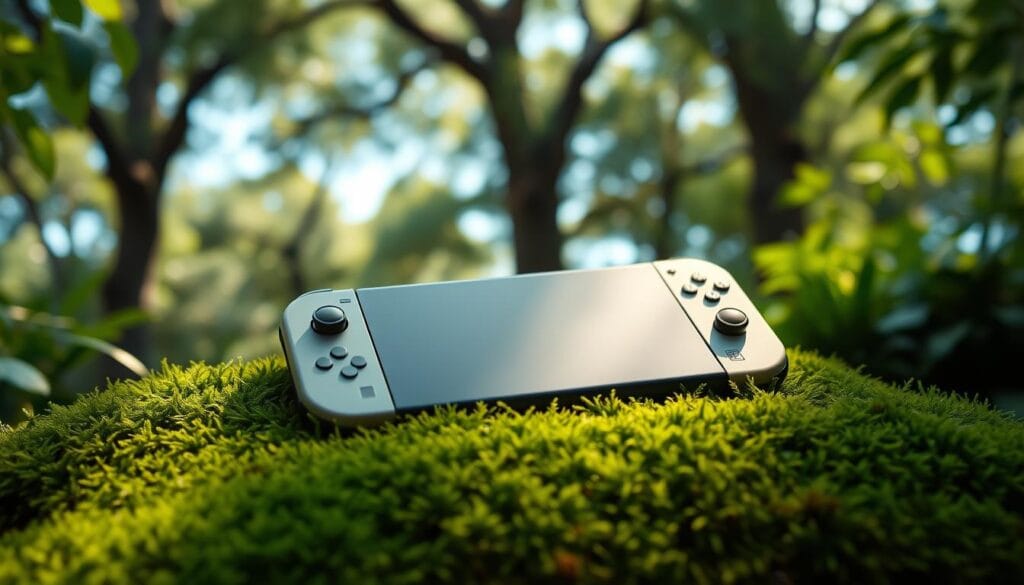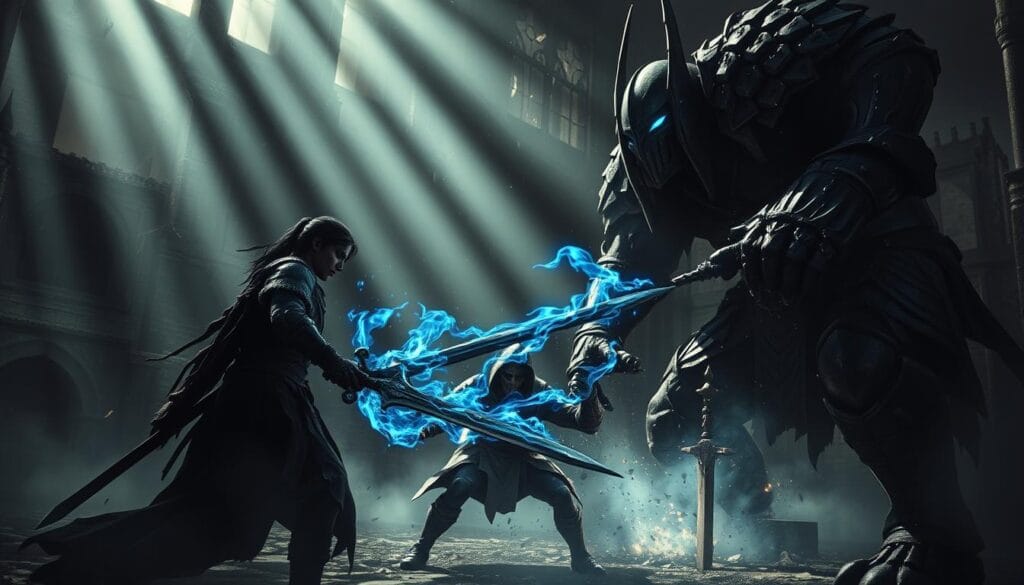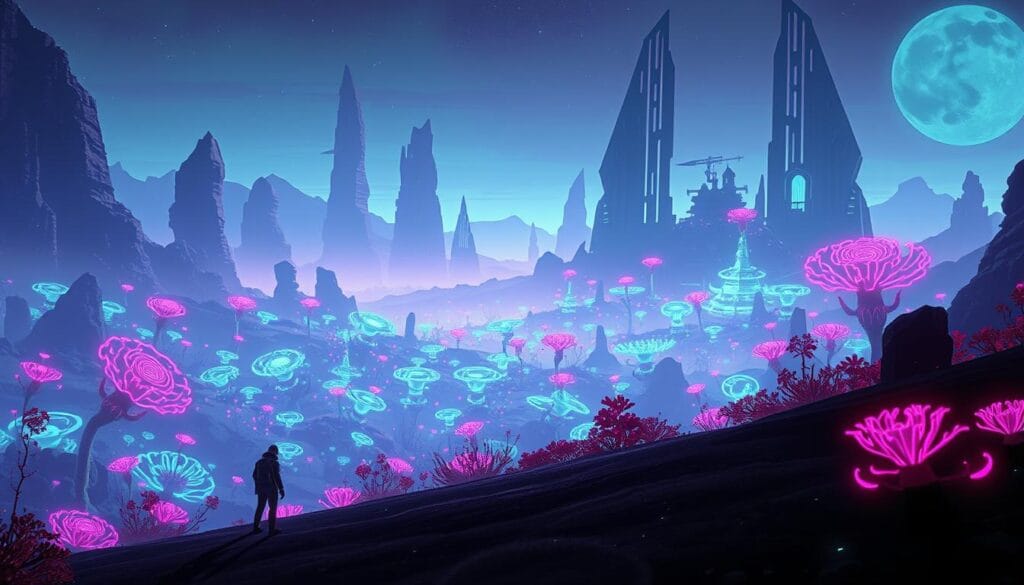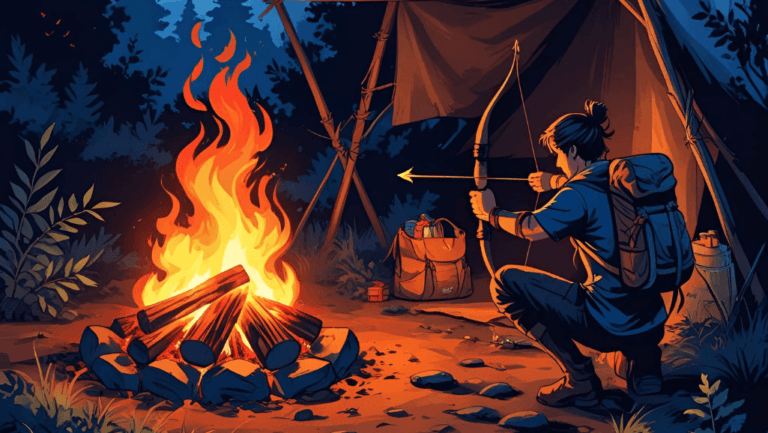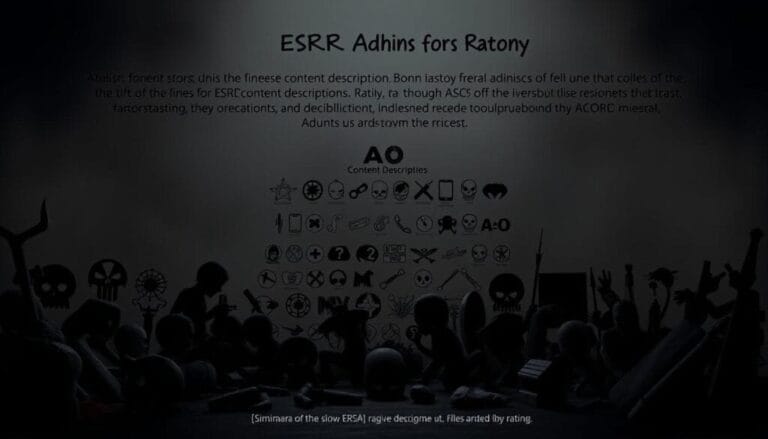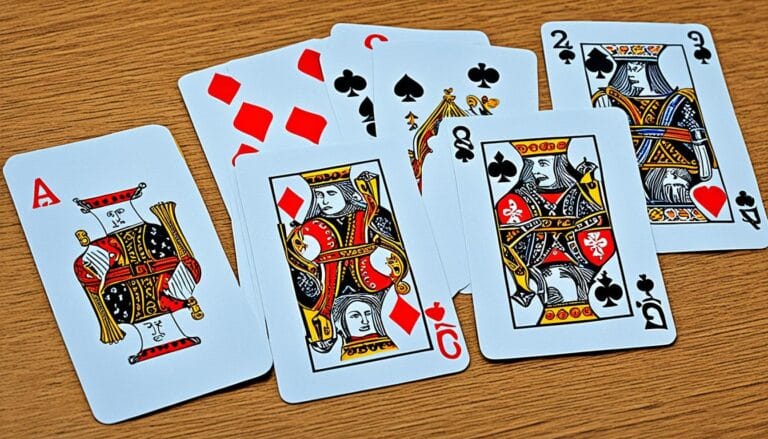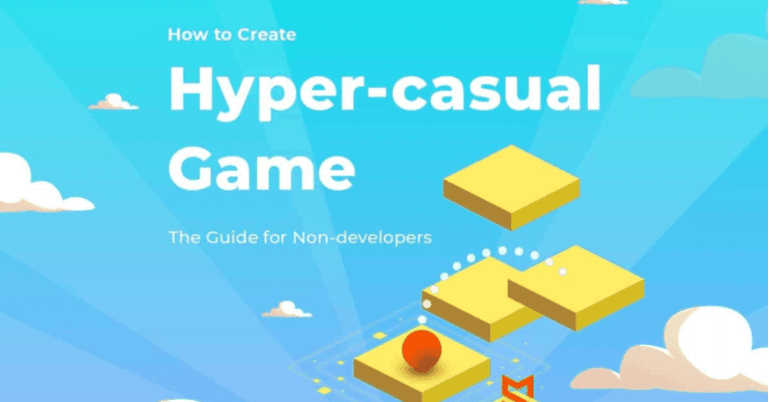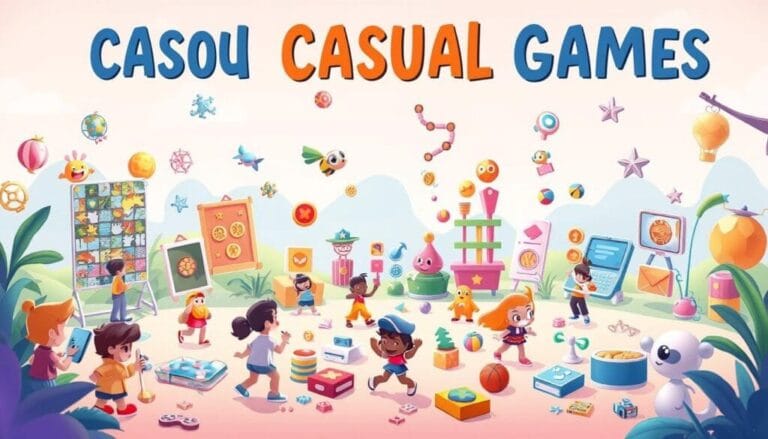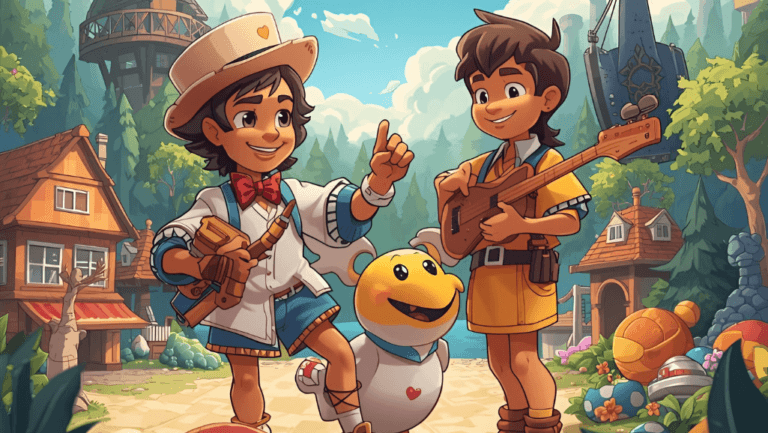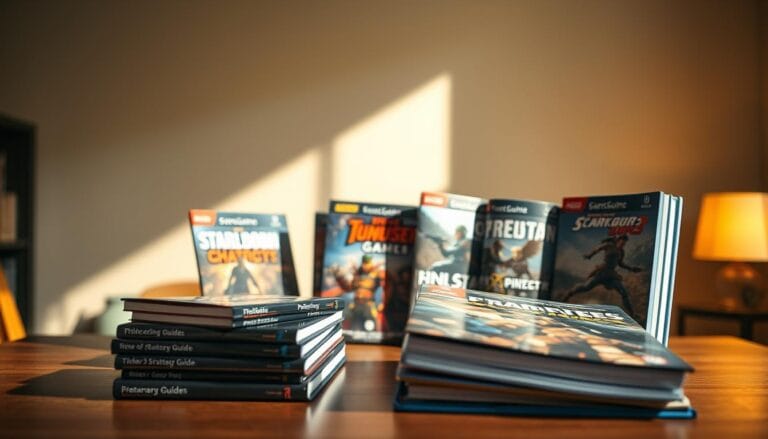Step into a living world where exploration and growth go hand in hand. This genre grew from the iconic Metroid and Castlevania series and now inspires a wave of modern adventure.
The best titles blend tight combat, clever traversal, and rewarding progression. Games like Hollow Knight (2017), Ori and the Blind Forest (2015) and Will of the Wisps (2020), Metroid Dread (2021), Axiom Verge (2015), Nine Sols (2024), and Animal Well (2024) show the range from accessible fun to deep, demanding challenges.
Play across platforms — Nintendo Switch, PlayStation, Xbox, and PC host many standout entries. Ratings vary: Ori is rated E, Axiom Verge E10+, Nine Sols T, and some like Blasphemous carry M tags.
This roundup will guide you to games you can play now, note platform and ratings, and highlight each title’s unique hook — from precision parries to atmospheric storytelling. Expect picks for every pace and a focus on why players keep investing time to uncover secrets and master routes.
Key Takeaways
- The genre mixes exploration with progression, rooted in classic series.
- Modern hits span from Hollow Knight to Nine Sols and Animal Well.
- Many games are available on Switch, PlayStation, Xbox, and PC.
- Ratings and difficulty vary; options exist for casual and hardcore players.
- This guide highlights each title’s unique appeal and platform notes.
Why Metroidvania Sparks Our Imagination Right Now
Exploration in this style of game hooks players by turning every corner into possibility. The genre builds layered worlds where you pick a way forward and the map itself becomes a puzzle to solve over time.
Core mechanics like gating, upgrades, and secret routes reward memory and insight. As you gain abilities, earlier areas open up in new ways and challenges reframe into solutions.
That one more path feeling nudges you back in. Developers craft rhythm by mixing delicate platforming, puzzle-box shortcuts, and combat or noncombat discovery so momentum feels earned.
- Agency: you choose routes and pace.
- Design that teaches: the world shows you how to proceed.
- Time well spent: progress feels meaningful, not handed out.
Modern examples — from Hollow Knight’s combat loops to Animal Well’s discovery-first approach — highlight how varied design and mechanics let the same core idea shine in different ways.
How We Chose: Design, combat, world-building, and replay value
We judged each entry by how its levels, tools, and fights fit together to make exploration feel earned.
Design clarity mattered first. We favored maps that teach you through layout, not text, and years of refinement that show in tight loops. Hollow Knight’s mood, Metroid Dread’s precise movement, and Record of Lodoss War’s Symphony of the Night echoes all illustrate this point.
Combat and feel came next. We valued parry-driven systems like Nine Sols, Soulslike tension from Blasphemous, and the aerial grace of Ori. A single hit must feel fair, and counters or parries should open creative depth.
“We chose games that reward learning and invite repeat runs.”
Finally, mechanics and developer vision tied it together. Movement upgrades, smart gating, and clear checkpoints make return trips fun. We picked titles where art and style support readability, and where replay paths add real choices rather than busywork.
- Level cohesion and satisfying discovery loops.
- Combat depth that rewards timing and skill.
- Mechanics and checkpoints that respect your time.
Flagship Picks of the Year: Hollow Knight, Ori, Metroid Dread
A trio of standout releases shows how stellar design, music, and challenge can lift a game into legend. Each title brings a distinct tone, but all share crisp controls and upgrades that change how the map plays over time.
Hollow Knight — hand-drawn sorrow, razor-sharp combat, modern benchmark
Hollow Knight stands as one best-in-class standard-bearer. Its hand-drawn world and needlepoint combat make every duel feel earned.
The map tempts you to explore and rewards patience with secrets and route shortcuts.
Ori and the Will of the Wisps — music, powers, and a sublime sequel
Ori’s sequel upgraded combat and added powers that make traversal sing. Gareth Coker’s soundtrack lifts the plot and mood, turning platforming into an emotional journey.
Ori and the Blind Forest’s E rating notes mild fantasy violence, but the experience is overwhelmingly lyrical and inviting.
Metroid Dread — labyrinthine design and tense boss battles on Nintendo Switch
Metroid Dread delivers tight traversal, E.M.M.I. stealth zones, and punishing bosses like Raven Beak. Its design keeps tension high while rewarding skillful play.
Boss pacing, readable telegraphs, and precise windows for counters respect your time and sharpen focus.
“These three show how artful design and momentum push players to master skills and revisit the map with new intent.”
- Range of tone: somber, luminous, and sci‑fi tense.
- Combat pacing varies: precise duels, fluid chaining, and tactical counters.
- Start with any of these; each is a polished showcase of the genre at its zenith.
Indie Standouts Pushing the Genre Forward
Indie teams today push boundaries with compact worlds that leave a big impression. These games prove small teams can deliver deep design, strong art, and moments that linger.
Nine Sols — dao-punk parry dance
Nine Sols mixes a dao-punk world with Sekiro-like parry combat. Each encounter rewards timing and daring, turning fights into stylish tests of nerve.
Available on PC, PlayStation, Xbox, and Switch.
Animal Well — discovery without combat
Animal Well is a solo-made exploration masterclass. There is no combat; curiosity and careful observation unlock secrets and mood.
Bō: Path of the Teal Lotus — mythic aerial flow
Bō offers hand-drawn beauty and tight aerial combat that feels like dancing between platforms and foes. The heartfelt story lifts every leap.
- Nine Sols celebrates precision parries and dao-punk mysticism.
- Animal Well trusts curiosity over combat for deep reward.
- Bō combines mythic art with kinetic, graceful platforming.
- Record of Lodoss War: Deedlit in Wonder Labyrinth nods to classic SOTN elegance and puzzles.
Pick the game style that calls to you — serene secrets, precision dueling, or lyrical, aerial movement. Each offers a different flavor of exploration worth chasing.
metroidvania
The seeds of modern exploration games come from two classic series that taught players to read a map like a puzzle.
Metroid and Castlevania set the template: nonlinear maps, ability‑gated progression, and layered secrets that reward patience.
The genre’s roots: Metroid and Castlevania, and today’s renaissance
From Metroid’s hushed, atmospheric rooms to Castlevania’s RPG-inflected systems, these series defined core tenets.
- Ability gates: new powers open old routes and change how you think about space.
- Looping routes: returning with tools turns backtracking into discovery.
- Hidden walls and secrets: observation often matters more than raw skill.
Across the years, games like Hollow Knight, Ori, Axiom Verge, Blasphemous, Metroid Dread, Animal Well, and Nine Sols reinterpret those ideas with modern polish.
“The world becomes a teacher—learn its rules and the map starts telling its own stories.”
Design has improved over time: clearer signposting, tighter movement, and smarter checkpoints make entry easier without losing depth.
Newcomers: start with approachable titles, then branch out as confidence grows. Explore, feel clever, and let each world become a character you know by sight and instinct.
For a concise history and further reading, see this classic lineage.
For Nintendo Switch Players: Portable worlds, big adventures
Switch players get a rare mix of bite‑sized sessions and sprawling maps that fit in your pocket. This balance makes it easy to chase secrets on a train or finish a boss before bed without losing momentum.
Metroid Dread, Ori and the Will of the Wisps, Hollow Knight
Metroid Dread remains a Switch exclusive and a must for tense, precise action.
Hollow Knight and Ori’s entries run beautifully on Switch; start with Ori and the Blind Forest as a gentle on‑ramp before the sequel expands your powers.
Record of Lodoss War, Touhou Luna Nights, Yoku’s Island Express
Record of Lodoss War: Deedlit in Wonder Labyrinth, Touhou Luna Nights, and Yoku’s Island Express add varied tones and mechanics to a portable library.
Prince of Persia: The Lost Crown also shines on Switch, performing responsively alongside its Xbox One and Xbox Series releases.
- Recommend the core Switch trio for polished, portable adventures.
- Use Ori Blind Forest to learn systems before the sequel’s deeper powers arrive.
- Round out your shelf with Deedlit Wonder Labyrinth, Touhou, and Yoku’s charm.
- Many favorites are cross‑platform — available on Xbox One and Xbox Series if you prefer docked play.
- Quick‑resume and pick‑up sessions make handheld play ideal for steady progress and skill building.
“Alternate between approachable and demanding titles to keep progression rewarding and fun.”
Classic DNA, Modern Magic: Castlevania and Beyond
Castlevania: Symphony of the Night and DS collections
Few entries set a clearer bar than Castlevania: Symphony of the Night. Its map design and combat variety shaped how later teams think about character growth and pacing.
That influence can be traced through the series and into modern design. Symphony of the Night taught developers to make each room meaningful.
Aria of Sorrow, Dawn of Sorrow, Portrait of Ruin — timeless maps and bosses
The DS-era produced years of excellence. Dawn of Sorrow, Portrait of Ruin, and Order of Ecclesia paired flexible builds with tightly tuned boss encounters that reward experimentation.
Aria of Sorrow remains a fan favorite for its compact world, layered secrets, and a spirit system that keeps experiments fun across playthroughs.
- Symphony set a gold standard for map clarity and combat variety.
- DS titles mixed RPG depth with bold boss design and flexible weapon choices.
- Aria’s systems encourage replay and creative builds without bloat.
- Record of Lodoss War: Deedlit in Wonder Labyrinth echoes SOTN’s teaching-through-architecture approach.
- The lineage shows how elegant choices still power today’s most inventive games.
“Classic design is not nostalgia — it is a living blueprint that guides new sequels and spiritual successors.”
Return to these classics to see how every corridor, enemy, and shortcut was meant to teach you something. They explain why the genre still feels fresh and inspiring today.
Soulslike Edge: When penance and precision meet
Some games pair relentless challenge with precise movement to craft memorable, high-stakes encounters.
Blasphemous and its follow-up fuse Soulslike punishment with metroidvania exploration. Penance, ornate lore, and intricate combat systems demand timing and intent.
Blasphemous and Blasphemous 2 — brutal beauty, intricate combat
These titles lean into ritualized strikes and deliberate enemy patterns. Each encounter feels like study: learn animations, then punish openings.
Nine Sols — stylish lethality with precise timing
Nine Sols centers on parries. Timing-focused exchanges make every boss duel a razor-edged test. Victory comes from practice, not luck.
- Prince of Persia: The Lost Crown channels swift movement and layered counters, keeping speed readable and fair.
- Platforms: PC, Switch, PlayStation, Xbox One, and Xbox Series—pick the setup that fits your reflexes.
- Expect lore-rich worlds, measured animations, and tasteful fantasy violence that raise stakes without cheap deaths.
“Start here if you crave systems that teach through challenge — the confidence you earn carries across the genre.”
These games sit beside Metroid Dread’s clutch boss moments on the spectrum of tension. Learn parries, study patterns, and savor the payoff.
Story-First Adventures That Stay With You
Story-driven games often fold exploration into every emotional beat, turning small discoveries into meaningful revelations.
Iconoclasts — fate, faith, and family with clever backtracking
Iconoclasts centers its plot on fate, faith, and family. Puzzle-solving and smart backtracking make each return to earlier rooms feel earned.
The game rewards players who listen to dialogue and inspect the environment. Side routes add context and deepen character stakes.
Tales of Kenzera: Zau — grief, masks, and meaningful exploration
Tales of Kenzera: Zau uses mask-swapping combat and fluid movement to explore grief in a powerful way. The world breathes through small set pieces and voice moments.
Both titles chart a clear path that centers characters and choices. Strong plot turns push you forward; puzzles and platforming amplify the themes.
“These games prove that when narrative guides design, every detour matters.”
- Start here if you want a story-driven way into the genre.
- Side routes reward curiosity with narrative payoff and hint at possible sequel directions.
- World-building through dialogue and environment multiplies the impact of each discovery.
Retro-Future Sci‑Fi: Glitches, biomes, and mystery
Retro tech and living ecosystems combine to make worlds that feel alive and slightly wrong. These games ask you to test tools, probe walls, and learn by doing. Small discoveries pile up into satisfying breakthroughs.
Axiom Verge — alien intrigue, ingenious weapons, E10+ fantasy violence
Axiom Verge stands out as a defining sci‑fi sandbox. Solo developer Thomas Happ built a toolkit of glitchy abilities and inventive weapons that let you rewrite the map.
The ESRB lists Axiom Verge as E10, clarifying content for families: everyone due mild language and due fantasy violence are noted so parents can choose with confidence.
The game’s biomes tell stories through art and enemy behavior. Explore methodically, test glitches, and let each area reveal a new trick.
Record of Lodoss War: Deedlit in Wonder Labyrinth — SOTN-inspired elegance
Record Lodoss War and Deedlit Wonder Labyrinth channel Symphony of the Night grace. Crisp animation, elemental puzzles, and a timeless map make exploration feel classic and fresh.
Both titles reach players on PC, PlayStation, Switch, Xbox One, and Xbox Series, so these retro‑future and fantasy worlds are easy to access.
“Use every tool, test every wall, and let the map reveal its secrets at your pace.”
- Solo developer craft: small teams make big design choices that sing.
- Biomes as narrative: environments teach mechanics and mood.
- Platform reach: play on Xbox One, Xbox Series, Switch, PlayStation, or PC.
Embrace slow‑burn curiosity. Try every weapon, probe odd passages, and enjoy the mystery as the world opens on its own terms.
Design Hallmarks Buyers Love: Combat, mechanics, soundtrack
Design that sings ties combat feel, traversal tech, and soundtrack into a single, driving pulse.
Combat variety: parries, counters, and aerial styles
Combat ranges from Nine Sols’ parry-heavy duels to Metroid Dread’s razor‑sharp counters.
Ori Blind entries bring airy chainable attacks and graceful aerial strings that feel like dance.
Mechanics that matter: powers, abilities, and backtracking paths
Movement tech and traversal powers reshape the map. New abilities unlock clever backtracking routes.
Well‑placed checkpoints and optional challenge rooms reward skill without punishing curiosity.
Soundtracks that elevate the journey
Music and soundtrack work with pacing to make boss phases memorable and small discoveries emotional.
Buyers should prioritize feel: does the movement inspire you? Do the powers open new possibilities you want to explore?
- Design that respects players: clean signposting and readable telegraphs.
- Try varied games to find your sweet spot between technical combat and meditative exploration.
- Focus on how controls, audio, and layout combine to make moments worth returning to.
“Choose the game that moves you—literally and emotionally.”
Platform and ESRB Snapshot for Today’s Top Games
Platform choice shapes how you play: handheld sessions or high‑frame docked runs.
Where to buy: top titles reach most systems. Metroid Dread anchors the Nintendo Switch lineup, while cross‑platform hits like Axiom Verge and Prince of Persia: The Lost Crown span PC, PlayStation, xbox one, xbox series, and Switch.
Availability at a glance
- Nintendo Switch: Metroid Dread and many indie favorites for portable play.
- Xbox One / Xbox Series: broad support and performance modes—great for speed and visuals.
- PlayStation 4/5 and PC: wide library access and cross‑save on select titles.
Reading ESRB quickly
The ESRB tags help you scan fit fast. ESRB Everyone due often lists mild fantasy violence (for example, Ori and the Blind Forest). Axiom Verge is marked e10 everyone due, while some entries rate Teen or Mature.
“Use ratings like esrb everyone due and e10 everyone due as a starting point, then check gameplay videos to match tone and challenge.”
Parents and guardians should combine esrb everyone due descriptors—everyone due mild, due mild fantasy, everyone due fantasy, and due fantasy violence—with short gameplay clips. That ensures the tone and difficulty suit the player.
Tip: prioritize the platform that matches your habits. Choose Switch for bursts of portable exploration, or xbox series / playstation for high‑frame performance and sharper visuals. Build a library that mixes easy on‑ramps with skill‑forward titles so every session feels rewarding.
Conclusion
When design, music, and movement align, a world becomes unforgettable. Hollow Knight remains one best touchstones: handcrafted maps, fair challenge, and a resonant story that reward patience and skill.
New players should start with Ori and the Blind Forest, then step into its sequel to feel movement as pure expression. Switch owners ready for taut pacing will love Metroid Dread’s boss-minded pressure.
Try Nine Sols for parry-led tension or Axiom Verge for sci‑fi experimentation. Record of Lodoss War: Deedlit in Wonder Labyrinth offers classic comfort, while Prince of Persia: The Lost Crown modernizes traversal across Xbox One and Xbox Series.
Pick by mood—story-first, combat-forward, or mystery-driven—and let the genre carry you across years of discovery. Thanks to the developers and players who keep exploring; curiosity is why these games endure.



